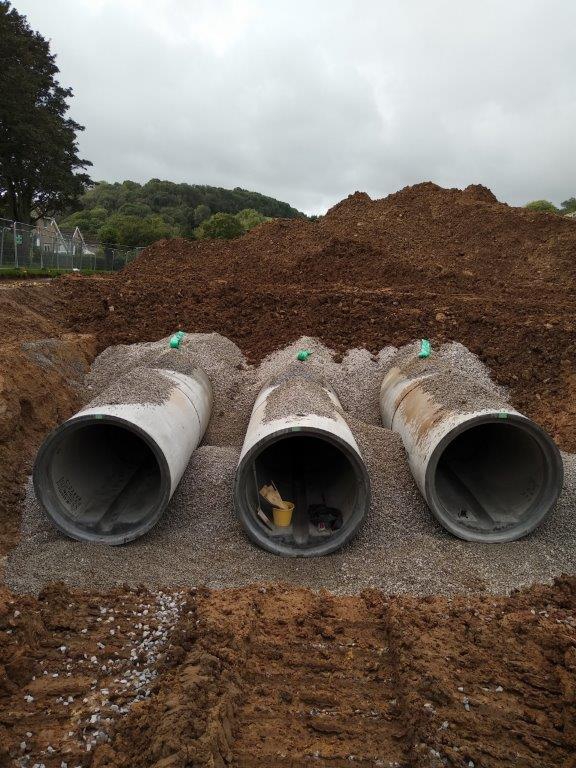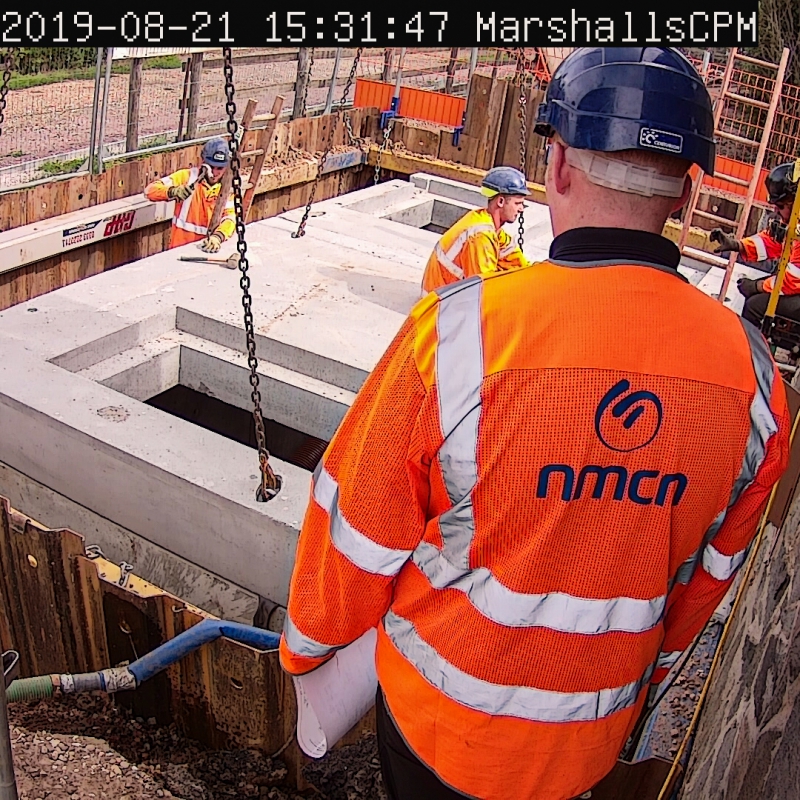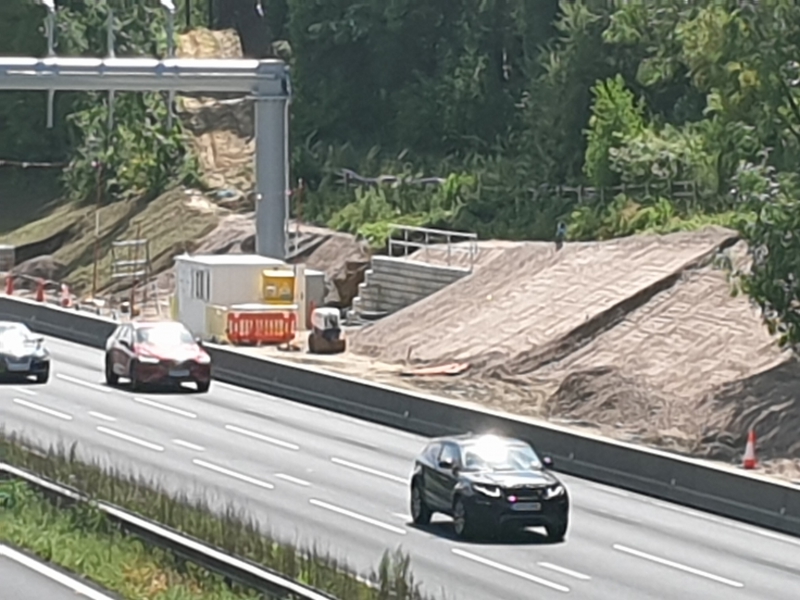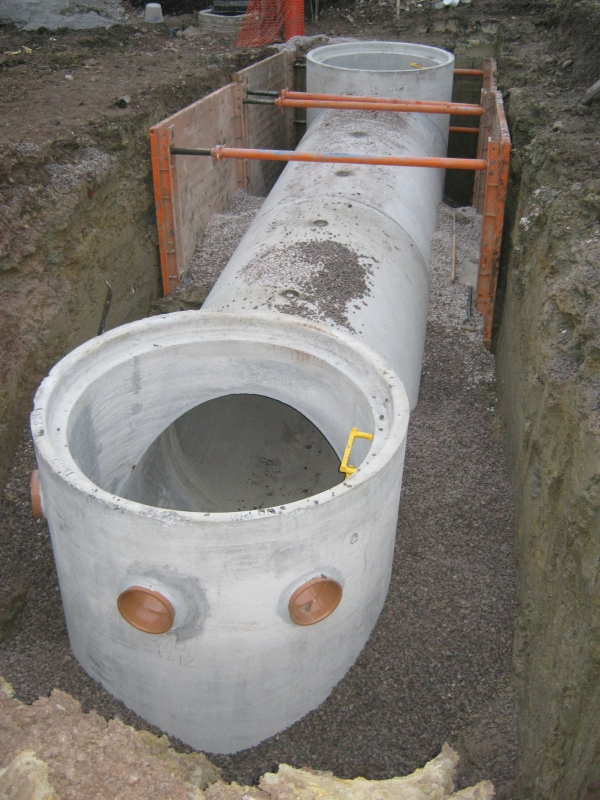- Contact 0870 350 7767
- |
- Advertise
Redi-Rock walling used for rebuild needing speed of installation
 News and PR from Marshalls CPM - Published 07 January 2020
The need for speed was required for the replacement of a retaining wall and platform following station damage at Moston Station, on the outskirts of Manchester.
News and PR from Marshalls CPM - Published 07 January 2020
The need for speed was required for the replacement of a retaining wall and platform following station damage at Moston Station, on the outskirts of Manchester. With train operating company, Northern Rail (a key stakeholder) expecting to run longer trains through the station from April 2019, the rebuild team had to come up with a solution which could be undertaken at speed. This meant scrapping the initial design by external consultants in favour of a scheme that avoided much of the track possession they had proposed.
ÂThe old design was all possession work. The plans were to excavate down right next to the track and cast a strip footing continuously all the way down, says Mr Evans. Situated within a 9m deep soil cutting; the original platform of Moston Station was a concrete structure that retained a granular fill. It incorporated an old brick retaining wall at the rear, which used to retain the cutting slope behind it. Network RailÂs in-house civil engineering team were tasked with redesigning and building the area in a short, eight-month programme. Their design and construction method centered on removing the need to use the track for plant.
Mr Evans explained: ÂNormally, the traditional method of construction would mean transporting material via the railway, this means the railway needs to be closed so working hours are restricted to midweek nights and Saturday evenings, which for this area would mean around six hours per shift. The access pointed for the plant is more than 1.6km away and the speed limit is 8km/h, so once a machine had got onto the railway and made its way to the site, an hour would have been lost. This would have reduced the working time to around four hours per shift.
The new design meant that most of the work could be undertaken while the railway was open, with the new platform construction excavating the toe of the cutting to create room for a new platform and replacing the old brick retaining with a new precast concrete one. Mr Evans added, ÂThere were some possessions for some elements of the work but these activities were achievable in the possession windows, whereas the alternative design was more complicated as it involved significant temporary
work, which posed a risk to track quality and were time-consuming.Â
Network Rail overcame the problem of where to place the construction equipment serving the site by undertaking an analysis of the stability of the cuttingÂs slope, which showed that it would be stable during construction while the toe was removed and the Marshalls CPM Redi-Rock retaining wall installed.
To find out more please visit https://www.cpm-group.com/news/redi-rock-walling-used-for-rebuild-needing-speed-of-installation/
Other announcements from Marshalls CPM
-
Attenuation systems for sustainable drainage project
Timeworn agricultural land is fast being used as the new source of development land for housing projects, such as the new Lewis Civil Engineering scheme for Taylor Wimpey Homes
07 Jan 2020
-
Precast option to stop the floods
As the EA begin looking into 1 in 30 year flooding events as opposed to 1 in every 100 years, flooding is now part of life for some people especially those living in Cossington in Leicestershire
07 Jan 2020
-
Smart solutions for smart motorways
The first smart motorway was introduced in 2006 in the West Midlands and proved so successful that in 2007, Ruth Kelly, the then Secretary of State for Transport began a programme of further schemes
07 Jan 2020
-
A flood risk solution to put your mind at rest
With the issue of seasonal flooding a real problem in the UK, Floodsafe Projects in Lancashire have worked on over 600 properties protecting them from the devastation flooding can bring
07 Jan 2020
-
Precast makes perfect choice for flood conditions
Following an extreme flooding event in 2012 to a residential area in Goole, Yorkshire, MMB (J N Bentley and Mott McDonald) have completed a £6 million scheme
07 Jan 2020









